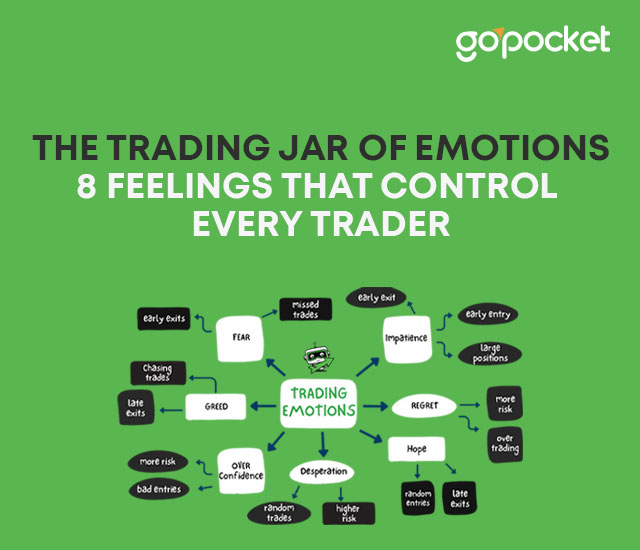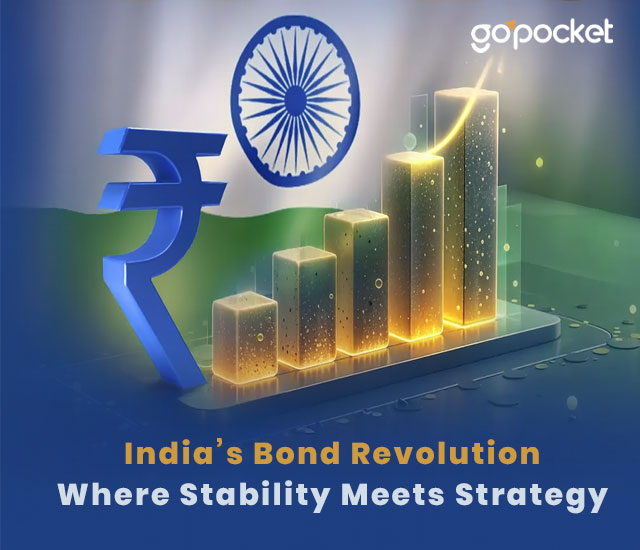
The headlines are buzzing, your friends are talking about their portfolio gains, and a palpable sense of excitement is in the air. The bull is running, and the Fear Of Missing Out (FOMO) is real. For any investor, this is the moment where a crucial question arises: How do I make the most of this opportunity?
The debate often boils down to a classic showdown: should you inject more capital into a high-octane equity fund to maximize gains, or should you opt for the steady hand of a balanced fund?
An advisor might tell you to seize the day and go all-in on equities. After all, a rising tide lifts all boats, and equity funds are the fastest ships in the fleet. But a part of you might wonder if there's a smarter, more sustainable way to ride this wave without risking a wipeout when the tide turns.
This isn't just a simple choice between risk and reward. It’s about understanding the engine you're putting your money into. It’s about aligning your investment strategy with your personal financial temperament and long-term goals.
Let's break down this dilemma, move beyond the hype, and build a framework that helps you decide with confidence.
Chapter 1: The Sprinter - Understanding Pure Equity Funds
Think of a pure equity fund as the star sprinter of your investment portfolio. Its sole purpose is to run as fast as possible, leveraging the full power of the stock market.
What is it? An equity mutual fund pools money from various investors and invests it directly into the shares (stocks) of different companies. Depending on the fund, it could be a mix of large, established blue-chip companies (Large Cap), promising mid-sized companies (Mid Cap), or high-potential small companies (Small Cap).
The Bull Run Advantage:
During a bull market, equity funds are in their element. As companies' profits grow and investor sentiment soars, stock prices climb. Since an equity fund's portfolio is composed entirely of these stocks, its Net Asset Value (NAV) can shoot up dramatically. This is where you see those eye-popping 30%, 40%, or even higher annual returns that make headlines. If your goal is aggressive wealth creation and you have the stomach for volatility, equity funds are your primary vehicle.
The Inevitable Catch:
The sprinter, for all their speed, is also susceptible to injury. What goes up can, and often does, come down. When the market corrects or enters a bear phase, equity funds bear the full brunt of the fall. The same direct exposure that fuels incredible gains during a rally leads to sharp, painful drawdowns during a downturn. An 8-10% market dip can translate to a similar or even larger dip in your portfolio, testing the nerve of even the most seasoned investors.
An Equity Fund is for you if:
- You have a long investment horizon (7-10+ years), giving you time to recover from potential downturns.
- You have a high-risk appetite and won't panic-sell during market corrections.
- Your existing portfolio is already well-diversified with safer assets like PPF, FDs, or debt funds.
- You are specifically seeking to maximize raw returns and are comfortable with the associated volatility.
Also read about our blog on ETF vs Mutual Fund: The Ultimate 2025 Guide for Indian Investors

Chapter 2: The All-Rounder - Demystifying Balanced Funds
If an equity fund is a sprinter, a balanced fund (also known as a hybrid fund) is the versatile all-rounder. It can score runs when the pitch is good and defend its wicket when the bowlers are on top.
What is it? A balanced fund invests in a mix of both equity (stocks) and debt instruments (like government bonds and corporate debentures). A traditional balanced fund might maintain a 65-70% allocation to equity and 30-35% to debt.
The Bull Run Reality:
During a bull run, the equity portion (the 65-70%) of a balanced fund works hard to capture the market's upside. However, because a significant part of the portfolio is in debt, it won't run as fast as a pure equity fund. If the market is up 30%, a balanced fund might be up 20-22%. This can lead to a sense of FOMO, as you see pure equity investors posting higher returns.
The Hidden Superpower: The Cushion and The Rebalance
The true magic of a balanced fund reveals itself over a full market cycle.
- The Debt Cushion: When the market inevitably corrects, the debt portion of the fund acts as a shock absorber. While the equity part takes a hit, the stable, interest-earning debt instruments provide a cushion, leading to a much smaller drawdown compared to a pure equity fund. This stability is crucial for mental peace and helps you stay invested.
- Automatic Rebalancing: This is perhaps the most underrated feature. A balanced fund manager is mandated to maintain the pre-defined equity-to-debt ratio.
- In a bull market: As stock prices rise, the equity portion's value swells. To maintain the 65:35 ratio, the manager sells some of the profitable equities and buys more debt. This is "selling high" automatically.
- In a bear market: As stock prices fall, the equity portion shrinks. To get back to the 65:35 ratio, the manager sells some debt and buys more equities at lower prices. This is "buying low" automatically.
This disciplined, emotion-free process of buying low and selling high is something most retail investors struggle to do on their own.
A Balanced Fund is for you if:
- You want to participate in equity growth but with lower volatility.
- You prefer a smoother investment journey and get anxious during sharp market dips.
- You want to build wealth steadily over a 5-7 year horizon without constant portfolio tracking.
- You appreciate the built-in discipline of automatic rebalancing.
Chapter 3: The Smart Evolution - Enter the Balanced Advantage Fund (BAF)
The investment world has evolved beyond the simple binary choice. What if you could have a fund that acts more like an equity fund in a cheap market and more like a debt fund in an expensive one?
Enter the Balanced Advantage Fund (BAF), or Dynamic Asset Allocation Fund.
This is a smarter, more flexible type of hybrid fund. Instead of a fixed equity-debt ratio, the fund manager dynamically changes the allocation based on market conditions, primarily using valuation metrics like the Price-to-Earnings (P/E) ratio.
- When the market is undervalued (cheap): The fund manager increases equity allocation, sometimes up to 80-90%, to capture the maximum upside.
- When the market is overvalued (expensive): The manager proactively reduces equity exposure, sometimes down to 30-40%, and shifts the money into debt to protect profits and lower risk.
This approach gives you the best of both worlds. Prominent examples in this category that investors often research include the HDFC Balanced Advantage Fund Growth and the SBI Balanced Advantage Fund. These funds have become incredibly popular because they aim to deliver equity-like returns over the long term but with significantly lower volatility.
For instance, when looking at options, many investors compare the long-term track record of the HDFC Balanced Adv Fund. When you decide to invest, you'll often see choices like the HDFC Balanced Advantage Fund Direct Growth plan. A "Direct" plan means you're investing directly with the fund house, which results in a lower expense ratio and potentially higher returns over time compared to a "Regular" plan. The consistent performance of funds like the HDFC Balanced Advantage Fund Growth has made them a cornerstone in many long-term portfolios.
Chapter 4: Ask Yourself the Right Question
The debate is not really "Balanced Fund vs. Equity Fund." The real question, as one financial expert aptly put it, is this:
"Do you need more equity risk, or do you need better risk-adjusted returns?"
Let's rephrase that into a simple checklist to guide your decision:
- What is the Goal of This Specific Investment?
- Is it for aggressive growth for a goal 15 years away (like retirement)? An additional equity fund might fit.
- Is it for a medium-term goal like a down payment in 6-7 years? The stability of a balanced or balanced advantage fund is more suitable.
- How Did You Feel During the Last Crash?
- Be honest. Did you feel anxious and check your portfolio daily? Did you consider stopping your SIPs? If so, your emotional risk appetite is lower than you think. A balanced fund will suit your temperament better.
- Did you see it as a buying opportunity and feel confident? You can handle the volatility of pure equity.
- Is Your Portfolio Truly Diversified?
- Your advisor pointed out your PPF and FDs. That's a great start. But what about your existing equity funds? Are they all large-cap? Adding another large-cap fund just creates overlap. Ensure a new equity fund adds true diversification (e.g., a multi-cap, flexi-cap, or even an international fund).
- Are You Willing to Be an Active Manager?
- A portfolio of pure equity funds requires more hands-on management. You need to periodically review and rebalance it yourself.
- A balanced or balanced advantage fund does the rebalancing for you, making it a "set it and forget it" solution for the long term.
Putting It All Together: Your Path Forward with GoPocket
Knowledge is the first step, but action is what builds wealth. The bull run is an exciting time, but a structured strategy will serve you far better than an emotional decision.
- For the Aggressive, Long-Term Investor: If your horizon is 10+ years and your risk appetite is genuinely high, adding a well-researched equity fund (that doesn't overlap with your existing ones) can be a powerful move.
- For the Prudent Wealth Creator: If you want growth with peace of mind, a balanced fund or, even better, a top-tier Balanced Advantage Fund like the HDFC or SBI options mentioned, is an outstanding choice. It offers a sophisticated, all-weather approach to investing.
The key to implementing your chosen strategy is having the right tools at your fingertips. To access this wide universe of funds—from high-growth equity schemes to sophisticated BAFs like the HDFC Balanced Advantage Fund Direct Growth—you need a seamless, powerful, and user-friendly platform.
This is where having a GoPocket Demat account becomes your gateway. It's not just about opening an account; it's about empowering yourself with the infrastructure to execute your well-thought-out financial plan. With GoPocket, you can research, compare, and invest in the funds that perfectly align with the goals you've just defined for yourself.

Conclusion:
Don't let the noise of the bull run dictate your entire strategy. Markets are cyclical. The real winners aren't those who perfectly time the market, but those who have a plan that allows them to stay invested through all market seasons.
So, take a step back. Assess your personal financial situation, your goals, and your temperament. The best fund for the bull run is the one that lets you sleep well at night, confident that your money is working intelligently towards your future, whether the market is roaring ahead or simply taking a breather.
"Investments in securities market are subject to market risks. Read all the related documents carefully before investing."
What's Trending
February 8, 2024
September 20, 2025
August 14, 2024
Recent Blog
Open Your Demat Account in Under 5 Minutes
Have any queries? Get support
Blog
Recent Blogs

Open your GoPocket Account within 5 minutes.
Have any queries?















